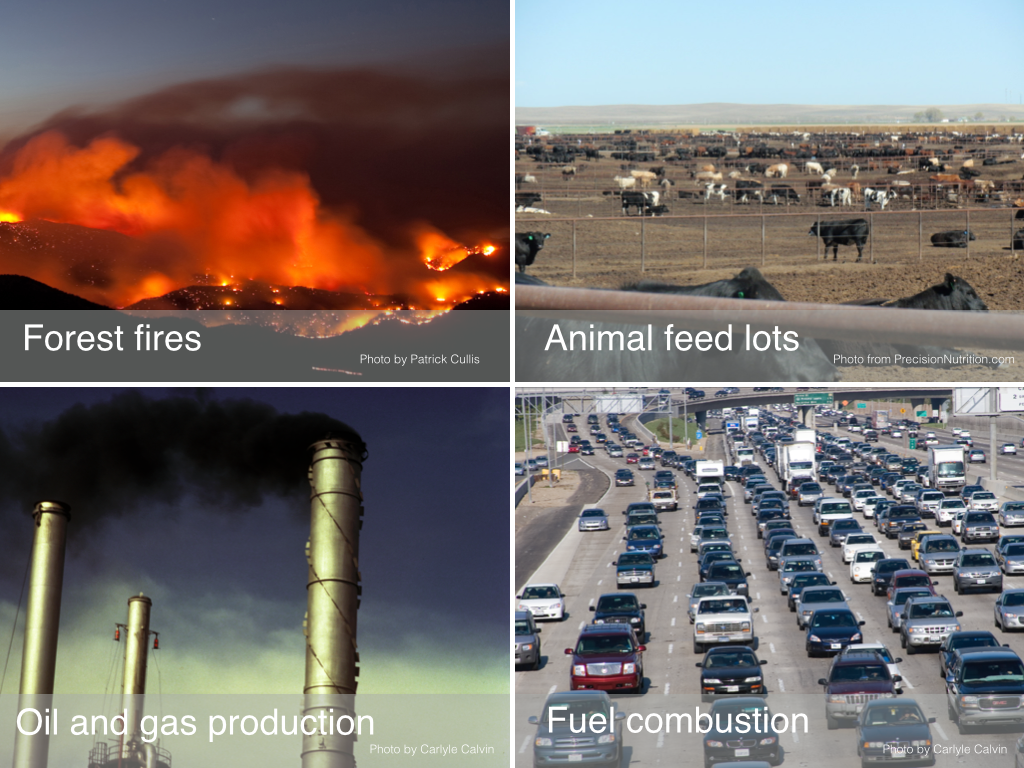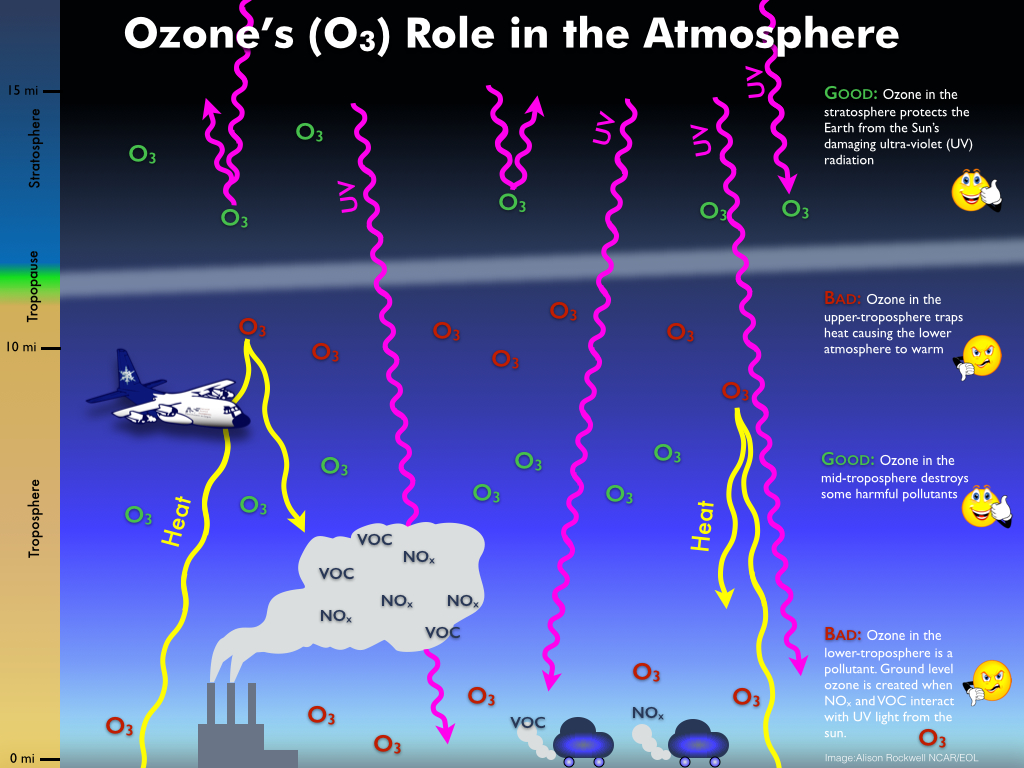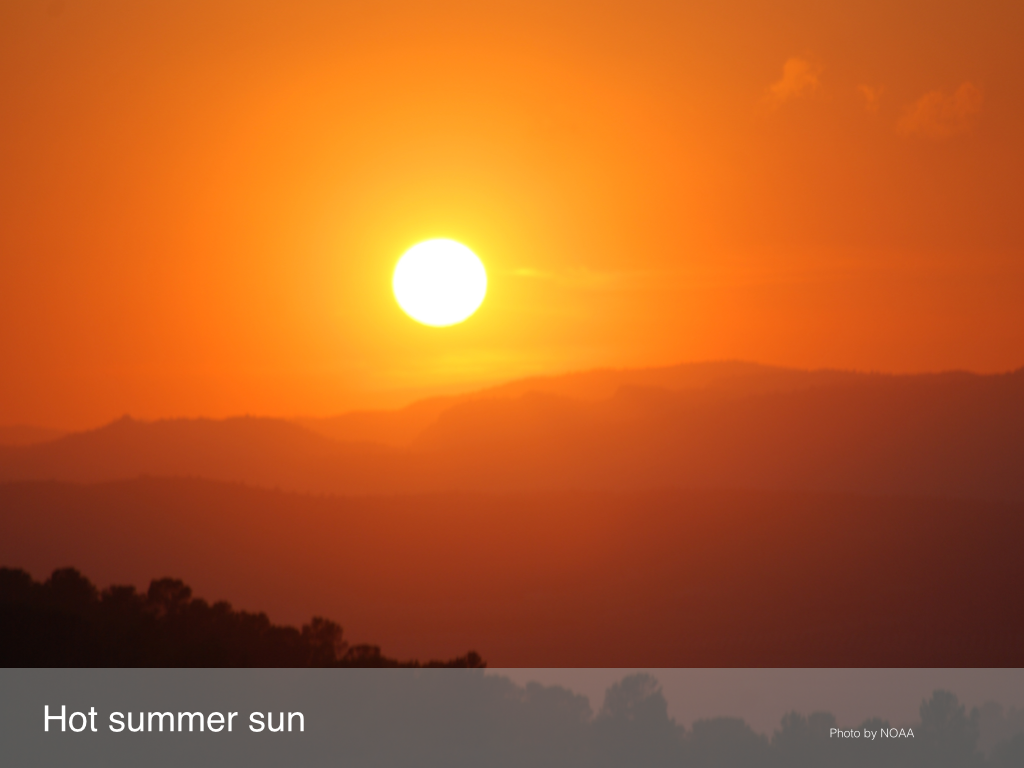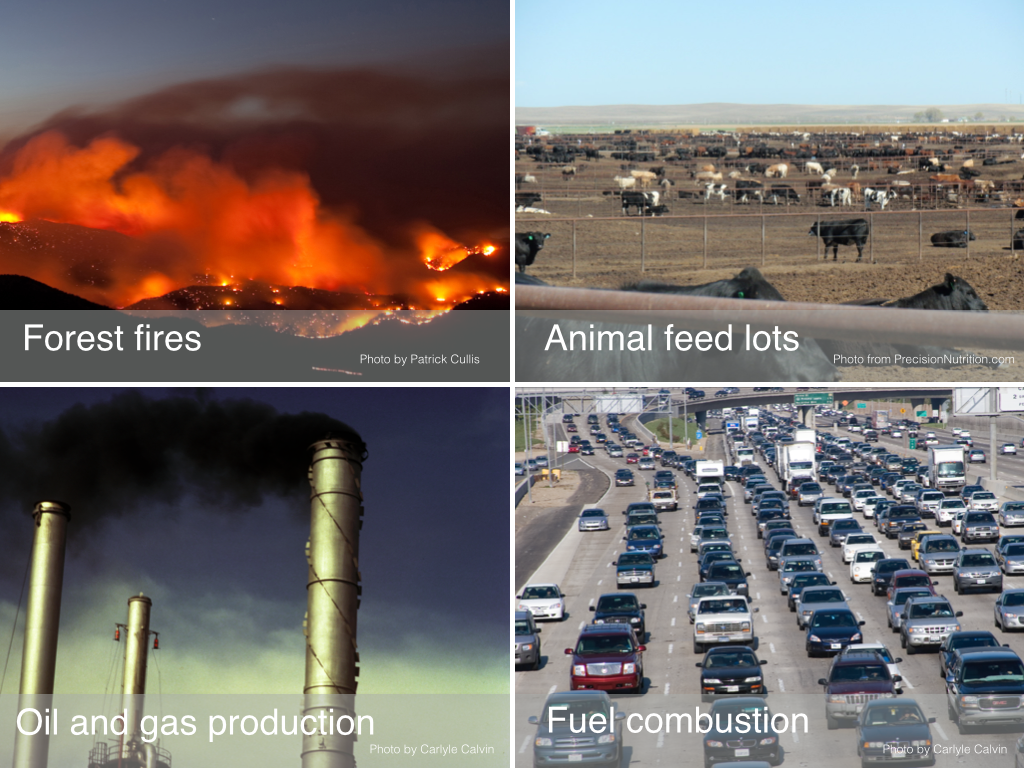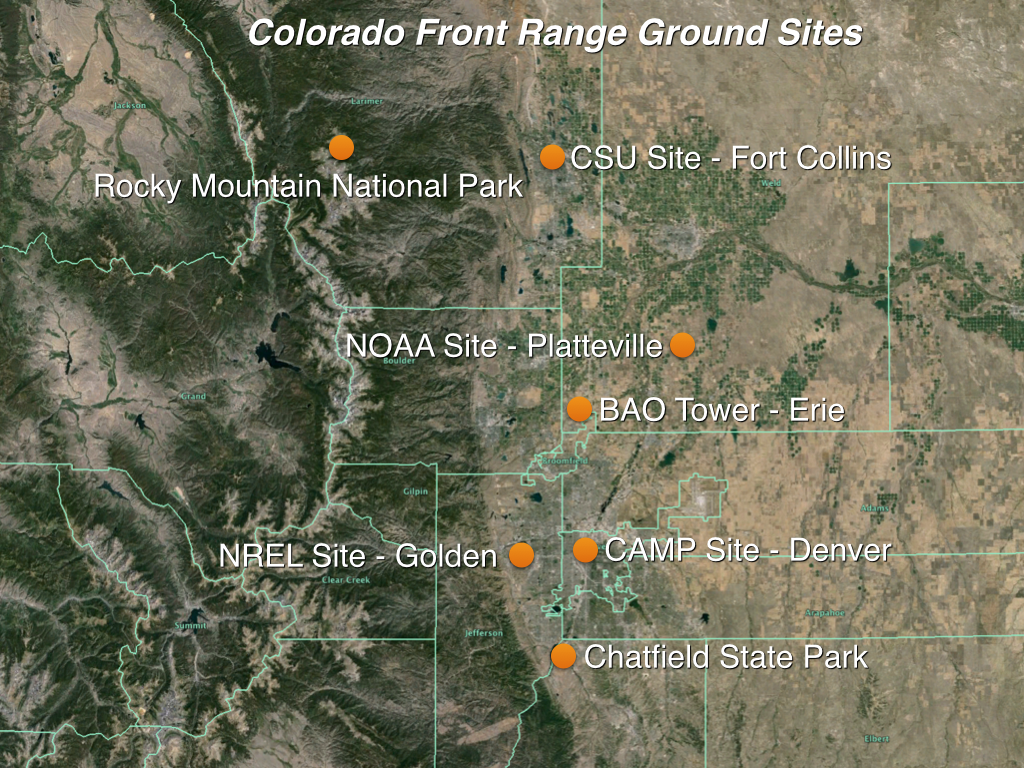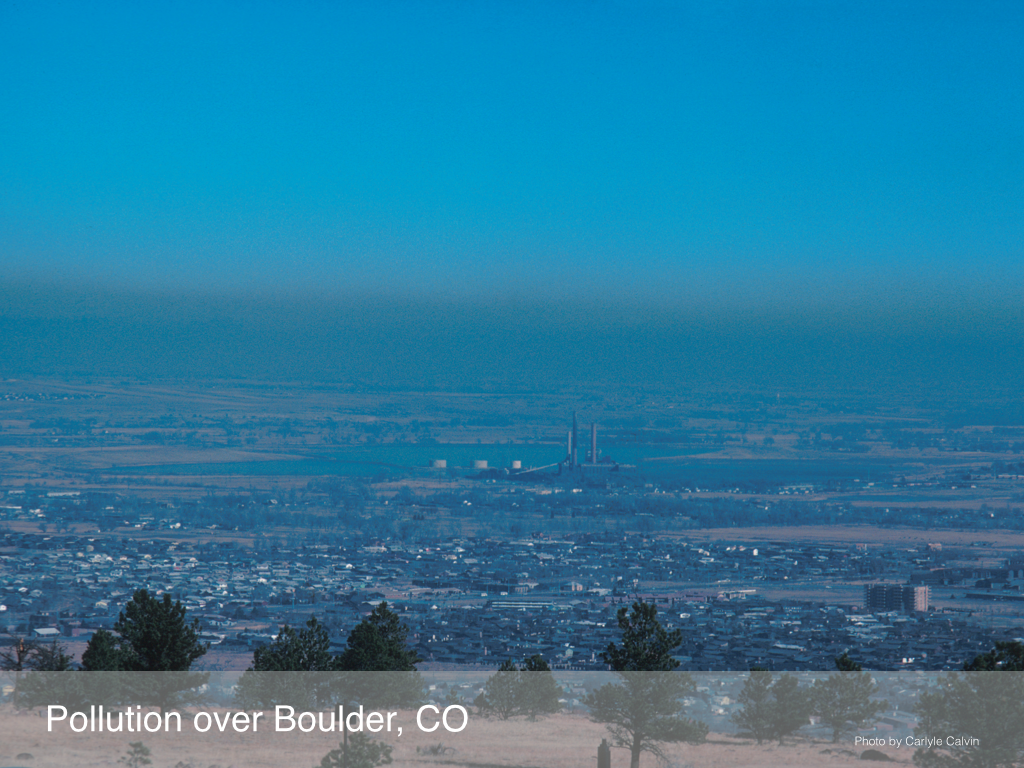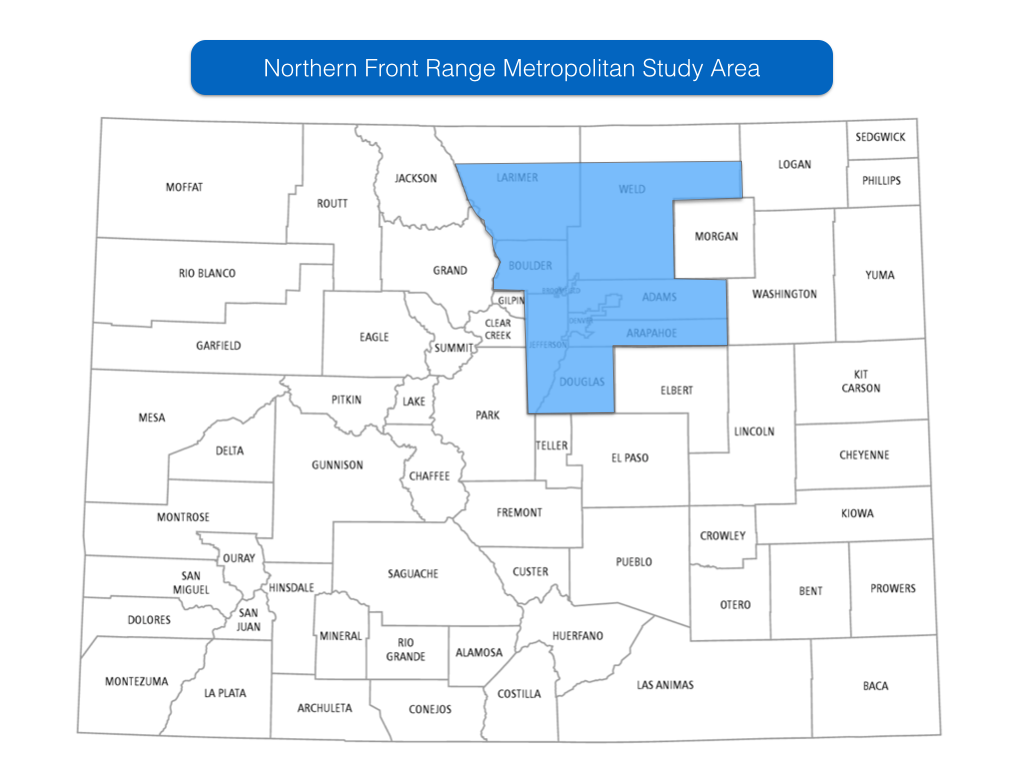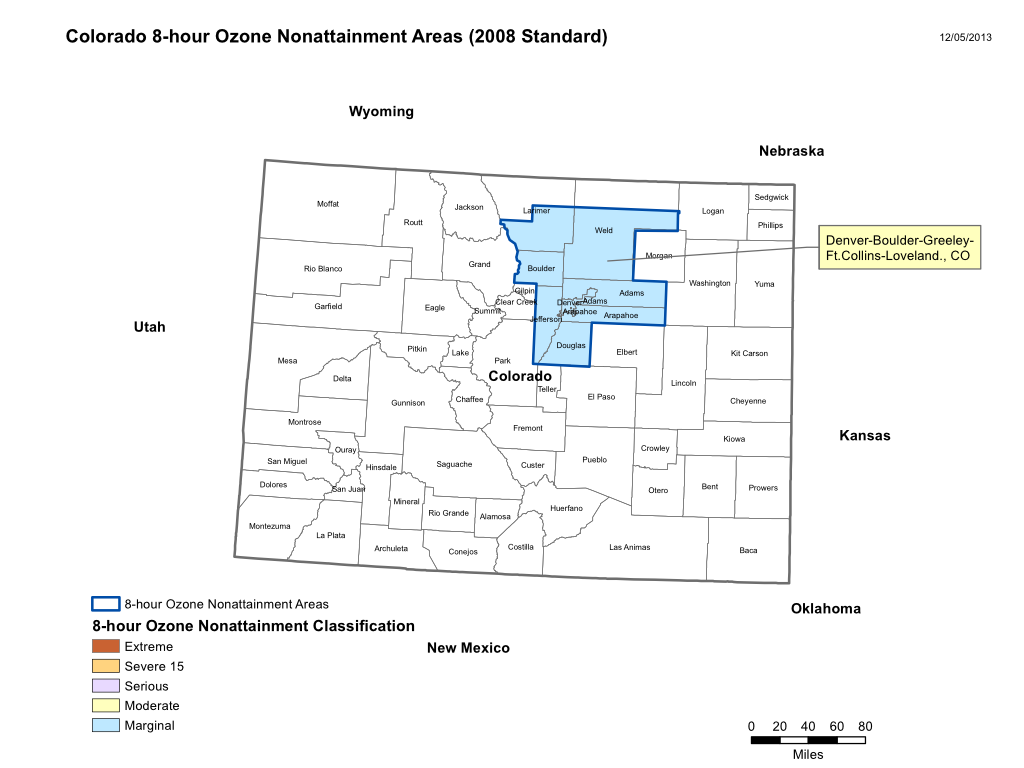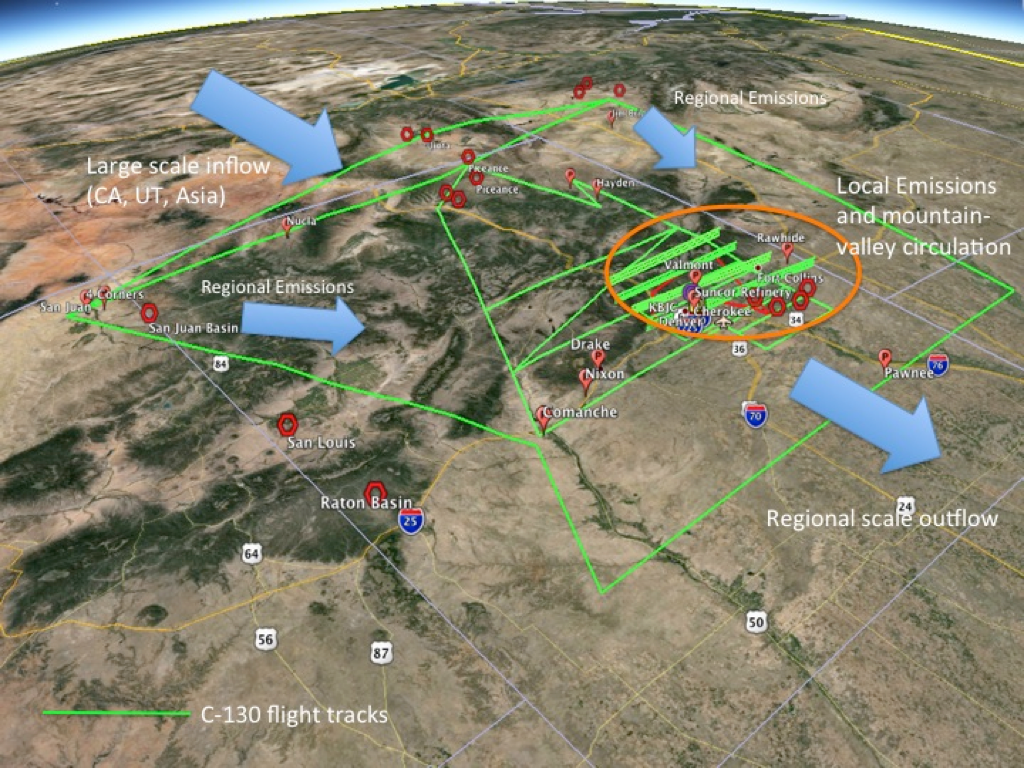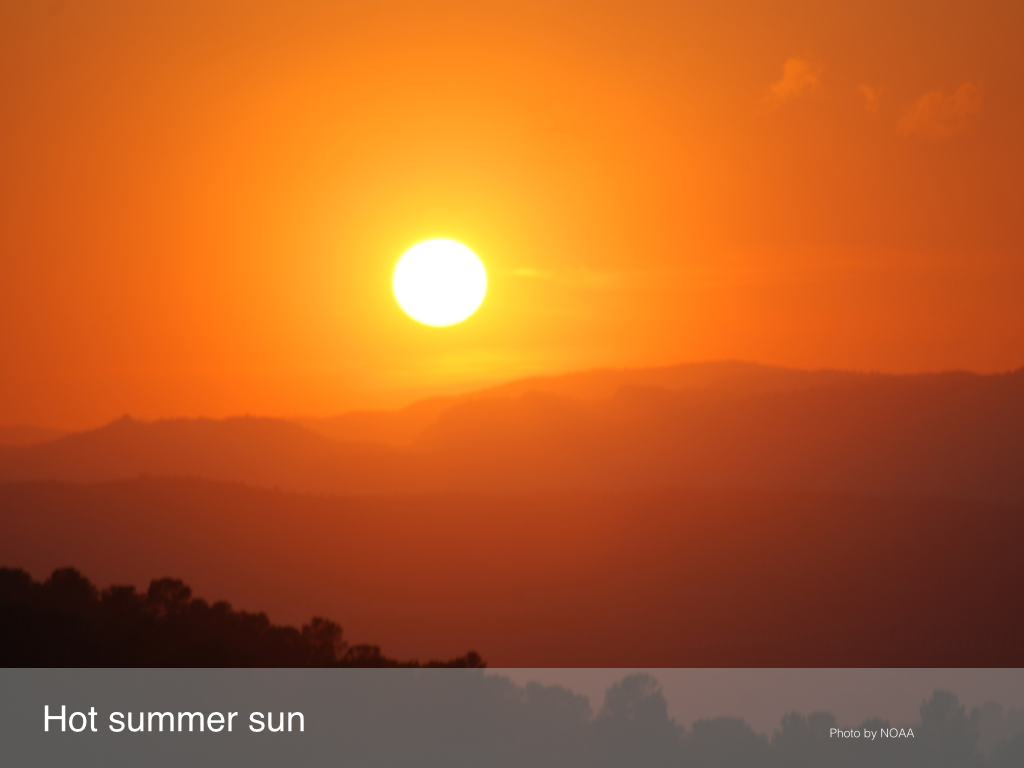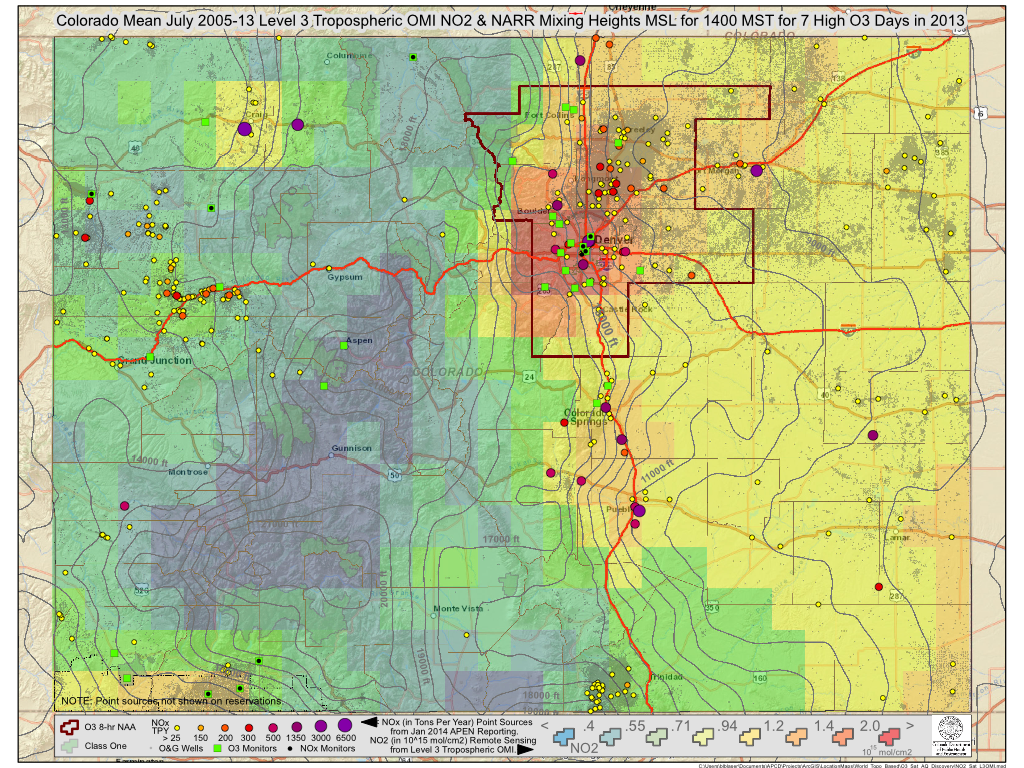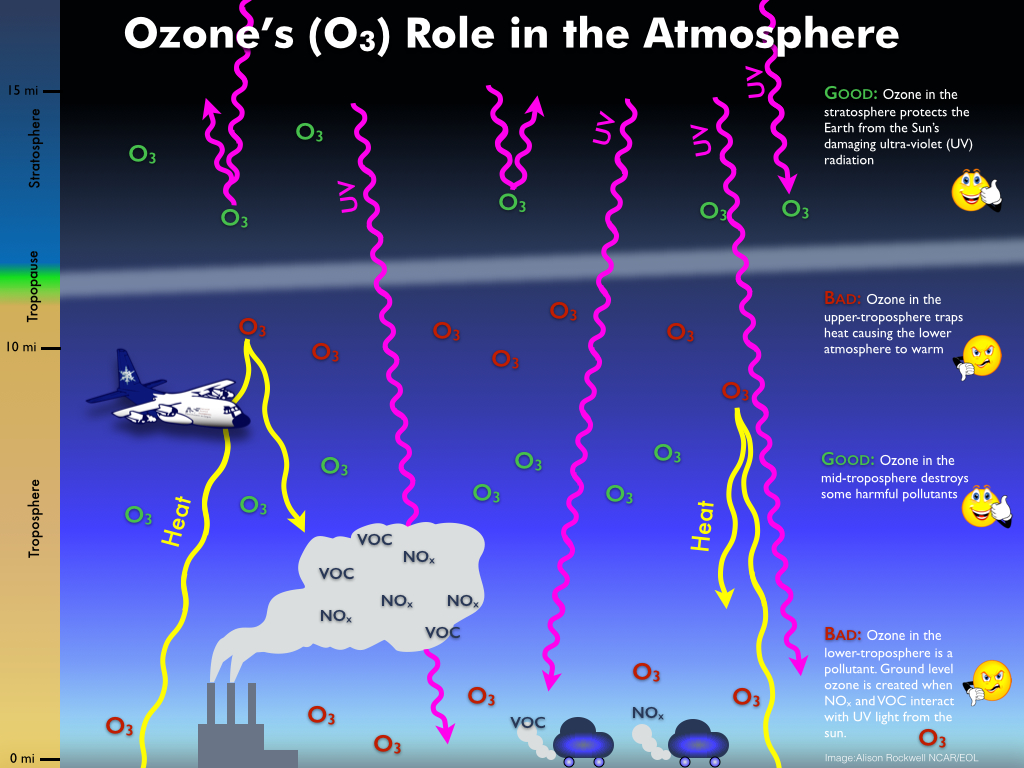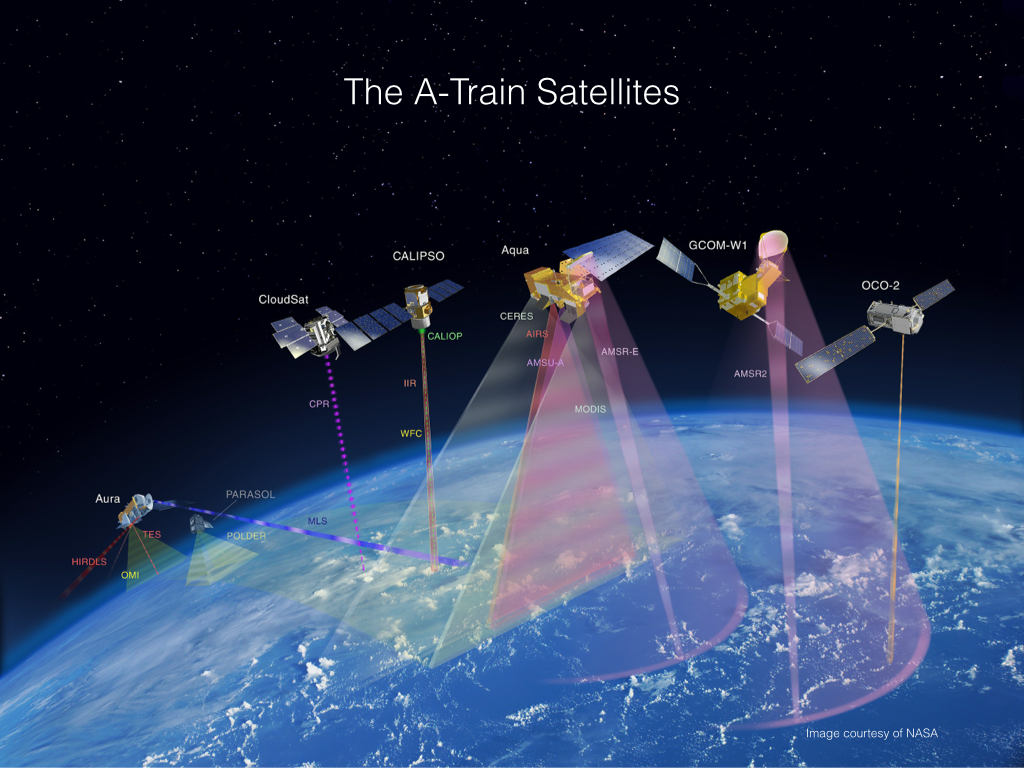| Why is FRAPPÉ focused in the the Colorado Northern Front Range Area (NFRMA)? |
The Front Range Air Pollution and Photochemistry Experiment – FRAPPÉ – aims to characterize and understand summertime air quality in the Northern Front Range Metropolitan Area (NFRMA).
Despite efforts to limit emissions, the NFRMA is still experiencing air quality problems and is exceeding the National Ambient Air Quality Standard for ozone on a regular basis in summer. The complex meteorology and the mix of diverse pollution sources present challenges with respect to characterizing, modeling and forecasting the transport and photochemical processes contributing to local air quality. In addition, long-range transport of pollution into the area and its impact on surface AQ is poorly characterized, as is the effect of NFRMA outflow on its surroundings.
The objective of FRAPPÉ is to determine the factors that control NFRMA ground-level ozone and improve our understanding of these processes so as to develop better models and support informed decision making.
| What chemicals are you studying and what are their sources? |
The FRAPPÉ field project is designed to investigate and quantify all factors contributing to air quality in the Colorado Front Range with a special focus on summertime ozone pollution. These factors include:
- Man-made emissions from human activities such as transportation, energy generation, industry, oil and gas activities, and agriculture
- Natural emissions from vegetation and emissions from possible wildfires
- Long-range transport of pollution from other western states or cross-continental transport from Asia
- Downward transport of stratospheric air is another potential source for ground level ozone
We will investigate how all these sources together with the unique meteorology and flow patterns in the region contribute to ground level ozone.
In order to understand ground level ozone, we must measure not only ozone itself, but also all the compounds that contribute to its formation. Ozone is not directly emitted. It is formed from the reaction of hydrocarbons and carbon monoxide in the presence of nitrogen oxides (NOx) and sunlight. We call these ozone precursors.
Ozone will be a main focus, but we will also take measurements of particles, their chemical composition, size and optical properties to quantify particle pollution and its sources.
| How can you determine from where certain chemicals are released? |
 Different sources of ozone precursors emit specific mixes of hydrocarbons and/or NOx, which we sometimes call a source “footprint.” Similarly, such relationships can also be found for emitted particles. We will look for and establish such footprints by flying close to the source regions and then we can use models to determine the contribution of each of these sources to the mix we find in the Front Range urban areas.
Different sources of ozone precursors emit specific mixes of hydrocarbons and/or NOx, which we sometimes call a source “footprint.” Similarly, such relationships can also be found for emitted particles. We will look for and establish such footprints by flying close to the source regions and then we can use models to determine the contribution of each of these sources to the mix we find in the Front Range urban areas.
Some sources also emit single tracer compounds, which are specific to a certain source. These can be different chemicals or compounds with the same chemical formula, but a different isotopic composition. By measuring such tracers we can determine the relative contribution of each source to the overall air quality.
| Are the chemicals that you are studying being produced locally or being transported in from long-distances? |
Transport of pollutants into the Front Range is a concern. Especially in the summertime, ozone values are often elevated in air that is transported into our region, which can exacerbate air quality problems. We will investigate and characterize this inflow and use the measurements together with models to quantify their contribution to ground level ozone in the Front Range and determine the sources contributing to such events.
| How is FRAPPÉ collaborating with NASA's DISCOVER AQ project? |
 The DISCOVER-AQ experiment isa NASA led campaign that will take place concurrently with FRAPPÉ. Both campaigns are highly complementary and use similar payloads for the aircraft. Wingtip-to wingtip intercomparison flights will be conducted to ensure the highest data quality and level of comparability.
The DISCOVER-AQ experiment isa NASA led campaign that will take place concurrently with FRAPPÉ. Both campaigns are highly complementary and use similar payloads for the aircraft. Wingtip-to wingtip intercomparison flights will be conducted to ensure the highest data quality and level of comparability.
In addition, the ground sites, which are used for both campaigns, are carefully balanced with contributions from both projects to maximize their scientific return.
DISCOVER-AQ is focused on establishing a link between satellite observations and ground-level pollution, in essence establishing the utility of satellite measurements for air quality now-casting and forecasting. This requires flying a very rigid flight plan that is centered over the ground sites and focused mainly on the urban area along the Northern Front Range. Since DISCOVER-AQ will continuously characterize the urban area, the NSF/NCAR C-130 used for FRAPPÉ can concurrently characterize areas of strong emissions that may contribute to air quality in the Front Range, and also look at large scale inflow and outflow.
| How will the six ground sites, mobile units, and aircraft coordinate observational data collection? |
Many instruments at the ground sites will operate 24/7 and provide data during the flights as well as when the aircraft are on the ground. Other ground-based activities (such as soundings at the BAO tower in Erie, measurements from tethered balloons and specialized sampling such as flask samples and mobile sampling around emission areas) will be closely coordinated with the flights.
Constant communication is ensured through use of an instant chat system as well as cell phones and GPS based location services. We will use forecast and nowcast products from a large number of weather and air quality models to assess the daily conditions during the campaign and based on these define the most optimal sampling strategies integrating all the involved measurement capabilities.
| I thought the ozone layer was a good protective layer for the Earth, how is ozone bad for us? |
The protective ozone layer is located in the stratosphere, where ozone is formed by the interaction of sunlight and naturally occurring oxygen. This layer of ozone is beneficial because it absorbs a large percentage of harmful ultraviolet (UV) light from the sun, affecting how much UV light reaches the Earth's surface.
However, the ozone that is being studied in FRAPPÉ is tropospheric ozone which can have both positive and negative effects depending on where it is located. Ozone in the upper troposphere acts as a heat trapping gas, having negative impacts. Ozone in the mid-latitudes of the troposphere are beneficial in that harmful pollutants are destroyed and made into ozone. Ozone at the ground level is a damaging pollutant.
| What season is ozone highest and what are the conditions that make it worse? |
Ozone typically peaks in the summer months, because one major ingredient is sunlight, which is stronger and more abundant in the summer. In addition, stagnant meteorological conditions such as a stable high pressure system over our area resulting in clear skies and high temperatures will exacerbate ozone pollution; these events are more typical for the summer months as well.
In contrast, frontal passages, which often are accompanied by stronger winds and cloudiness can flush polluted air out of the area.
Letter from the Project Manager
Digital Camera Imagery and Movie Notes
Suggestions Regarding FRAPPE Processing For Wind and Pressure
Quick Questions for FRAPPÉ PIs
Relevant FRAPPÉ PI Publications
Research Aircraft Public Open House

